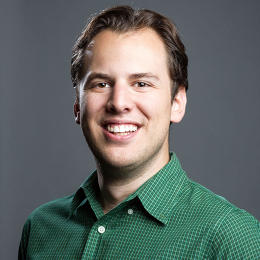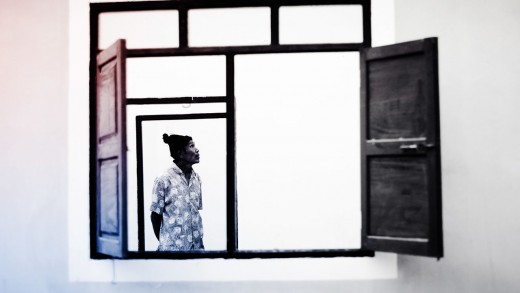Do the easy factor First: The Engineering at the back of Instagram
it can be easy to avoid problems when you find yourself tiny. Doing it at scale is a bigger problem.
June 23, 2015
When Instagram arrived in the iPhone App retailer in October 2010, it mirrored the work of a two-person building workforce: founders Kevin Systrom and Mike Krieger. Neither had classic instrument-engineering backgrounds. (At Stanford, Systrom all in favour of administration science and Krieger studied symbolic techniques.) And when it was a phenomenon—it can be nonetheless the long-lasting instance of an app that done blockbuster status almost the moment it existed—Systrom had to divert his consideration to operating the industry, leaving the engineering to Krieger.

“We knew simply enough engineering to get us off the ground and build V1 of Instagram,” says Krieger of those early days. quite a bit has came about due to the fact then, together with fb’s $1 billion acquisition of the corporate in April 2012. lately, it operates out of fb’s Silicon Valley campus, with a staff of just about one hundred engineers. The carrier they build serves 300 million active customers who put up 70 million photography a day.
however in spite of everything this time, the original engineering philosophy of the Kevin-and-Mike generation endures: Do the straightforward factor first.
“When there were just two of us, we did not have the time to do the fanciest, most full thing,” Krieger explains. “Doing the easy thing first began as a survival tactic, and was a mantra.” nowadays, “‘that phrase is burned into brains of all my engineers, which is superior.”
As Instagram launches an updated version with radically revised Search & discover options, I chatted with Krieger and different staffers about the ongoing problem of engineering an app recognized, in particular, for straightforwardness and pace. It was never a cakewalk—and because the issues Instagram does get extra bold, it simplest will get more difficult.
“principally, the intention is simply to inspire creativity,” says product supervisor John Barnett. “To lend a hand people create issues that they wish to share with others, and that they may be ok with. And doing that in a really easy, based method is in reality in point of fact onerous.”

easy by means of Necessity
When Systrom and Krieger began constructing Instagram, they worked out of a co-working area known as Dogpatch Labs. Krieger remembers a neighboring startup badgering him about ambitious technical issues akin to JSON optimization. His response? “Guys, you wouldn’t have a single consumer or user but.” The duo made technical decisions for Instagram the usage of a concept which liked practicality over perfection: “If it solves an issue and gets us closer to launch, let’s do it.”
They failed to start out understanding the whole thing required to create Instagram, but that was once ok. Krieger educated himself on the fly, gazing on-line videos to learn about engineering challenges as he confronted them. the issues presented by the app “weren’t fancy, glamorous issues,” he says. “They had been neatly-trodden by different places like fb and Twitter.”

For some time, Instagram remained well-known for having a remarkably small team of workers given how huge its community of users had grown. at the time of the facebook acquisition, with 30 million customers, it had just six engineers, who Krieger stated it had located “in all different types of untraditional places.” (One was once a defector from a Dogpatch Labs startup seated near Instagram—now not the one obsessive about JSON.)
“i needed to bring on truly great folks, however they had been onerous to seek out,” he remembers. “We have been too busy to rent.” That received more uncomplicated when Instagram became part of fb. It wasn’t just about cash. the brand new mum or dad firm’s neatly-oiled recruiting device supplied a gradual go with the flow of engineering talent, letting Instagram preserve its staff’s high quality high even once it was once no longer minuscule.
i thought that as Instagram bought bigger, it should have reached some technical crossroads which pressured it to dump Systrom and Krieger’s unique model for something sturdy and scalable. Krieger disabused me of that conception. “people nonetheless in finding ‘Kevin code’ in the codebase,” he says. “We’re no longer refactoring or rewriting code only for its own sake. software is like gardening—one day I’ll go at the back of the shed and clean up. but if no person ever goes there, does it matter a lot?”
regardless of the shocking level of continuity, much has modified about Instagram’s strategy to engineering. Krieger says that project capitalist Matt Cohler, an Instagram investor, was proper when he informed him early on that “your company is going to interrupt each time it doubles.” What may also be performed on an ad hoc basis if you have a handful of engineers—like committing new code to the codebase—gets tricky fast when dozens of individuals are concerned.
Instagram addressed this conundrum in part by means of adopting facebook’s extremely automated processes for deploying software. A year ago, it moved to a steady machine which has it rolling out new code to its servers 50 instances a yr. the usage of “canary” releases, updates go out to a subset of users in the beginning, limiting the power of buggy tool to do damage. “If stuff blows up it impacts a very small percentage of individuals,” Krieger says.
The better group pushing out code in a extra formalized style has paid dividends. “we think that Instagram hasn’t changed all that so much,” says product dressmaker Josh Dickens. “however man, going back, from the first-run experience and all of the approach down the road, we’re making some big, daring modifications for Instagram.” in the last six months, for instance, the app has delivered four new ingenious tools; in seven months, it’s delivered seven filters.
“We without a doubt move very quick on Instagram, particularly for the reason that team could be very small,” says tool engineer Mona Huang. (Small, in fact, is a relative time period—but for Huang, who interned on fb’s newsfeed, Instagram appears to be like dinky.) “With net building, we have been releasing all the time, day by day. With app construction, we free up once each two weeks. You do have to ensure issues are in just right shape sooner than they exit.”
Instagram is beneath no responsibility to undertake the technologies that fb uses—and in some cases creates—for its personal website online and apps. “after we received there, people asked, ‘Are you going to rewrite your web page in PHP?,'” Krieger says. “No. it will sluggish us down.” The provider’s back end continues to be written in Python with, particularly in recent days, a touch of C++. It additionally utilizes a storage know-how called Cassandra that facebook invented, open-sourced, and then abandoned.
nonetheless, there are occasions when embracing fb is smart. Instagram has shifted heaps of servers from Amazon internet products and services to fb knowledge centers, a transfer which Krieger says is each cheaper and more environment friendly in relation to integration. And now and again, simply piggybacking on facebook’s far greater team of engineers makes sense. “If it takes us a month to adapt one thing it took fb a year to build, that’s 11 months were saving,” he says.
Getting giant, considering Small
these days’s Instagram could conduct itself in a extra skilled manner than when it was once just Kevin and Mike, however passion and personal predilections make for a greater product. “i like that our engineers are initially Instagram users,” Krieger says. some of the app’s best overhauls got here when the staff crammed a whiteboard with popular actions, corresponding to fetching a photograph from the server—and then resolved to chop the time that every job took through 50%. “In a month, we pretty much lowered the latency through 1/2,” he remembers. “which is a substantive growth for customers.”
every other side of retaining a small-group feel is with the intention that engineers continue to speak to each other, even when as activities grow more a ways-flung and there are too lots of them to cram into one conference room. On a month-to-month foundation, crew participants share data by way of 10-minute “lightning talks.” “It helps resolve issues in an Instagrammy way, but it’s about crew unity as a lot as bettering code,” says Krieger.
of course, the “first” in “do the easy thing first” acknowledges that now not the whole thing can be finished in a easy model. For one factor, retaining the consumer interface easy in some way trumps all else, including easy engineering. And as Instagram has delved into more and more sophisticated picture-processing applied sciences, a few of its engineering efforts had been complex by any definition.
as an example, when the corporate needed to introduce a function to let customers adjust a photo’s standpoint, “we had more than one engineers going thru more than one rounds of generation,” says instrument engineer Udeepta Bordoloi. “We had individuals who labored at Pixar, we had individuals from MIT. We spent lots of hours on the whiteboard going during the equations. We tweaked and tweaked and tweaked. We at last ended up with an answer that we’re ok with that almost definitely satisfies ninety nine.9% of the use cases.” It entails best two on-display sliders, down from 5 in one rough draft of the feature.
Enter Android
In 2012, Instagram arrived on its second platform: Android. somewhat than purely doubling the engineering challenge, the fractured nature of Google’s working machine increased it by using an order of magnitude.

“There are some specific Android challenges we don’t have on iOS,” Bordoloi says. “You simply have this type of wide range of units. It’s no longer simply trying to get the UI to suit the display styles and sizes. the other factor is that emerging markets are typically Android-heavy. we’ve to care quite a bit for low-reminiscence gadgets, individuals who have low bandwidth. I in my view take pride that on lots of those no longer-so-good phones, we will do editing, and you don’t really have to attend, and we don’t scale back the resolution.”
Technically, it can be no longer so simple, however the end result retains the traditional Instagram sheen, especially in contemporary releases of the Android version. “it can be a fairly large feat,” says Barnett. “We spend a lot of time making an attempt, for nearly all gadgets, to offer them instruments. now not simply announcing ‘ what? The instrument is over a year outdated. they are no longer going to get perspective or structure.'”
“I’ve just been blown away persistently by using our Android staff,” adds fashion designer Dickens. “i am like, ‘Are you sure you can do this?’ and so they’re like, ‘Oh yeah, no downside!’ It makes my job lots easier.”
One Instagram characteristic that is not on hand on Android is Hyperlapse, which lets you shoot slick time-lapse Instagram movies the use of your iPhone’s digital camera. that is as a result of it isn’t an Instagram feature, strictly conversing. as a substitute, it can be a stand-by myself iOS app tuned especially for Apple’s digital camera.
the truth that Hyperlapse lives out of doors of Instagram lets the corporate preserve the iOS and Android apps at parity. (any other stand-on my own app, the collage tool structure, debuted on iOS in March and on Android two months later.) however it has other engineering advantages as smartly. by means of breaking apart Instagram’s world into a couple of apps, “they’re easier to test,” says Bordoloi. “There’s much less floor house in each and every app, so the apps don’t destroy as steadily.”
A Month shouldn’t be sufficient
the new Search & explore options that Instagram is introducing these days are one of the vital most sophisticated functionality that it’s ever constructed—the form of factor that you may suppose would have been inconceivable unless the engineering group reached its current vital mass. however preserving with Instagram’s original spirit, they did not commence as an immense endeavor. in fact, they started with one individual looking to build one thing useful in a month.
“now we have this factor at facebook/Instagram referred to as a Hackamonth, through which engineers can go and spend a while on a different workforce,” says engineering supervisor Rodrigo Schmidt. “There used to be an engineer who needed to take a look at working with us for a month. We have been getting began on the idea of trending, and had been like, ‘you can are available and do this in a month.’ it can be so humorous in retrospect.”
as soon as the venture used to be underway, it ballooned. Tallying up what’s widespread, Schmidt says, used to be easy. the problem is that the most well-liked Instagram hashtags—corresponding to #like and #love—are constantly the most popular hashtags. “For locations, it can be Disneyland, at all times,” says software engineer Thomas Dimson. the bottom line: A undeniable-vanilla accounting of the easiest-extent objects would had been particularly boring. Or possibly offensive, due to the fact that unfiltered results may also embrace pornography.
instead of taking one particular person one month, imposing the trending engine—and related search features—used to be a protracted-time period challenge for approximately 20 individuals. “identifying the real developments and actual situations, and taking out the bad issues, is tremendous arduous,” says Schmidt. “It took us months of tuning and months of refining the algorithms simply to do this.” For search, the engineers dumped Instagram’s earlier engine, Elasticsearch, in desire of a house-grown facebook know-how constructed for social-networking applications, Unicorn.

“All this is a again finish we did not have,” Schmidt says. “A product infrastructure we did not have. And a UI that we did not have.” Even the fact that the original Hackamonth undertaking turned out to be hopelessly unrealistic used to be a lesson price studying. “It was a month to determine that this was once a harder drawback, which was once good to find out,” says Dimson.
As Instagram tackles additional projects on the scale of the new Search & explore, it will want to get greater. but possibly no longer all that so much greater all that fast. Of a hundred forty five tool-engineering positions listed on facebook’s recruiting web site as I write this, simplest two are at Instagram. each job descriptions emphasize the fact that it’s a lean outfit serving enormous numbers of customers.
“paradoxically, i’m trying to keep this team small whereas additionally rising,” says Krieger. That technique makes for an Instagram that may dream new dreams while last recognizable as Instagram. you should say it can be doing the easy factor first.
fast company , read Full Story
(142)














